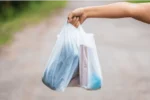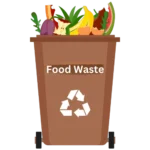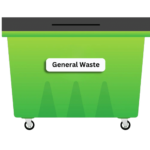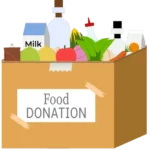Supermarket waste disposal
Save on commercial waste collection quotes today
Just enter your postcode…
Save on commercial waste collection quotes today
Just enter your postcode…
Start saving now

7 billion plastic bags are prevented from polluting the environment from the plastic bag charge.
Compare the latest supermarket waste disposal solutions to benefit from:

Pinpoint the most cost-effective services tailored to your needs, leading to significant cost savings. This will allow you to secure better rates and lower landfill taxes and disposal costs.

Assess the reputation and track record of different waste collection providers to ensure reliable and high-quality service delivery and reduce the risk of missed collections.

Significantly reduce your environmental footprint, making your supermarket more appealing to consumers and enhancing your corporate social responsibility profile.
Our waste experts explore supermarket waste management practices, focusing on optimising commercial waste collection and disposal strategies, including organic, recyclable, and general waste.
We discuss effective waste strategies for supermarkets, including how to deal with challenges to recycling plastic waste – underscoring the importance of sustainable practices in enhancing a supermarket’s environmental standing.
We will cover the following subjects in detail:
Supermarket waste streams
Waste minimisation in supermarkets
Supermarket waste removal strategy
Plastic bags over the years: A supermarket conundrum
Individually controlling the waste streams supermarkets produce is essential for effective waste management strategies.
Here, our waste experts summarise supermarkets’ key types of waste.

Commercial food waste is generated from unsold items that surpass their sell-by or use-by dates, damaged packaging that affects product integrity, and overstocking, which leads to spoilage.
Perishable goods like fruits, vegetables, dairy, and baked goods are especially prone to becoming waste due to their limited shelf life.

Plastic waste stems from product packaging, including primary packaging that directly contains and protects the product and secondary packaging used for shipping and display.
Examples include plastic wrap on produce, bottles for beverages, trays for meat, and the shrink wrap used to secure multipacks of household items.

General supermarket waste encompasses all non-recyclable waste that doesn’t fit into specified recycling categories, such as organics or plastics.
General supermarket waste includes used cleaning supplies (non-hazardous), non-recyclable packaging materials, broken or unsalvageable non-food products, everyday operational refuse, and floor sweepings.

Wood waste in supermarkets predominantly originates from wooden pallets for transporting and delivering goods.
These pallets are essential for efficiently moving large quantities of products but often become damaged or unusable over time. While some can be repaired and reused, those that cannot are recycled into wood chips or mulch or sometimes used for energy recovery through biomass conversion.

Electronic waste in supermarkets arises from outdated or broken equipment such as tills, scales, scanners, and returned electronic goods that cannot be resold.
This includes old computers, staff devices, and any in-store electronic promotional tools that have reached the end of their functional life.

Cardboard waste is generated from packaging materials for transporting and displaying goods, including cardboard boxes, cartons, and packaging inserts.
This includes corrugated cardboard boxes used to ship and store inventory, product packaging and display stands made from cardboard for promotional materials.

Hazardous waste encompasses expired medications from in-store pharmacies and waste like batteries or fluorescent light bulbs.
Due to stringent health and safety regulations, supermarkets must properly handle and dispose of hazardous waste to ensure top-level hygiene and safety for customers and the environment.
Discover practical solutions for reducing supermarket waste, from inventory optimisation to sustainable packaging. Save resources and costs while boosting sustainability.

Reduced price sales offer supermarkets a strategic method of minimising waste by selling products nearing expiration or with damaged packaging at discounted rates.
By offering these items to customers at reduced prices, supermarkets prevent unsellable products from being discarded, recouping revenue and reducing environmental impact from waste.

Establishing a robust database and inventory management systems forms the bedrock for effective waste minimisation strategies.
Such systems enable better tracking of inventory, sales patterns, and customer preferences, leading to more accurate demand forecasts.

Sustainable packaging plays a crucial role in a supermarket’s waste minimisation strategy. It reduces the environmental impact by using renewable, recyclable, or biodegradable materials.
This decreases decreasing the amount of non-recyclable waste generated. Sustainable packaging aligns with consumer preferences for eco-friendly products, enhancing the store’s brand image and attracting environmentally conscious customers.

Implementing demand forecasting tools tailored to products’ perishable nature helps order the right quantities, reducing overstock and waste.
This involves analysing historical sales data, seasonal trends, and market conditions.

Carefully planning the assortment size based on customer demand and sales data can significantly reduce waste.
Adjusting product ranges to match consumer buying habits and avoiding overstocking items with low turnover.

Defining differentiated service levels for various products based on their shelf life and sales velocity can help minimise waste.
For instance, products that are more likely to go unsold should have lower inventory levels.

Tailoring the ordering and replenishment processes to the specific requirements of perishable goods can reduce waste.
This may involve more frequent deliveries of smaller quantities and leveraging just-in-time inventory practices.

Exploring salvage options such as dynamic pricing for items close to their expiration date, secondary usage within prepared food sections, or donating unsold but safe-to-consume food to charities can mitigate the impact of overstocking.
Every year, Supermarkets throw away 100,000 tonnes of readily available edible food in the UK.
Supermarkets employ various commercial waste bin types to manage and segregate recycling streams from general waste.
These bins cater to different waste streams, including food waste, packaging, and recyclables.
The types of bins used are tailored to the specific needs of waste management within the supermarket sector, focusing on sustainability and recycling goals.
Here’s a breakdown of the common bin types found in supermarkets, their placement and the materials they’re meant for.

Placement: Customer entrance or exit areas.
Common Materials: Plastic bags, film packaging, and wraps.
Reason: To collect plastic films and bags that require special processing and cannot be mixed with other recyclables, supporting recycling these materials into new products.

Placement: Across the store, including customer areas, staff rooms, and back of the warehouse section.
Common Materials: Non-recyclable packaging, wrappers, and other general waste.
Reason: For waste that cannot be recycled or composted, aiming to keep this to a minimum through better packaging choices and customer education.

Placement: Back of the store, preparation areas, and sometimes customer-facing areas for cafe waste.
Common Materials: Unused or unsold perishable goods, food scraps from food preparation, and customer food waste from in-store cafes.
Reason: To separate organic waste for composting or anaerobic digestion, reducing landfill usage and methane emissions.

Placement: Back of the store.
Common Materials: Cardboard waste from packaging.
Reason: A cardboard baler is a specialised machine designed to efficiently compact and bundle cardboard waste for convenient recycling.

Placement: Typically in storage or waste management areas, not customer-facing due to breakage risk.
Common Materials: Glass bottles and jars.
Reason: Glass is infinitely recyclable without losing quality, and separating it reduces contamination in other recycling streams.

Placement: Controlled access areas, not accessible to the public.
Common Materials: Cleaning chemicals, certain batteries, fluorescent bulbs.
Reason: To ensure hazardous materials are handled and disposed of safely, protecting workers and the environment from potential harm.
The UK’s approach to reducing plastic bag waste through legislation and public awareness campaigns has seen significant success.
The introduction of the single-use carrier bag charge in 2015 marked a turning point, compelling major supermarkets to charge 5 pence for plastic bags.
This initiative led to a drastic reduction in plastic bag use, with a reported 95% cut in sales from major supermarkets since the charge’s implementation.
The effectiveness of the charge is evident in the substantial decline in single-use carrier bag use across the UK, with Wales, Scotland, and Northern Ireland witnessing reductions between 71% and 71.8% in the first years following the charge’s introduction.
These efforts were part of a broader legislative framework aimed at tackling climate change and reducing waste, with regulations slightly varying across different UK regions.
In 2021, the government doubled its efforts to curb plastic waste by increasing the carrier bag charge from 5p to 10p and extending this requirement to all retailers, regardless of their size.
The impact of these initiatives has been profound.
By 2023, the usage of single-use carrier bags at the leading retailers had dropped by more than 98% since 2014, with the average person in England buying just two bags a year from these retailers, compared to around 140 before the charge was introduced.
The number of bags reported as sold by these retailers reduced by 33% from 2021/2022 to 2022/2023.
This dramatic reduction prevented over 7 billion plastic bags from polluting the environment.
💡The charge has facilitated significant donations to good causes, with retailers voluntarily donating over £206 million to various charities since the charge’s introduction.